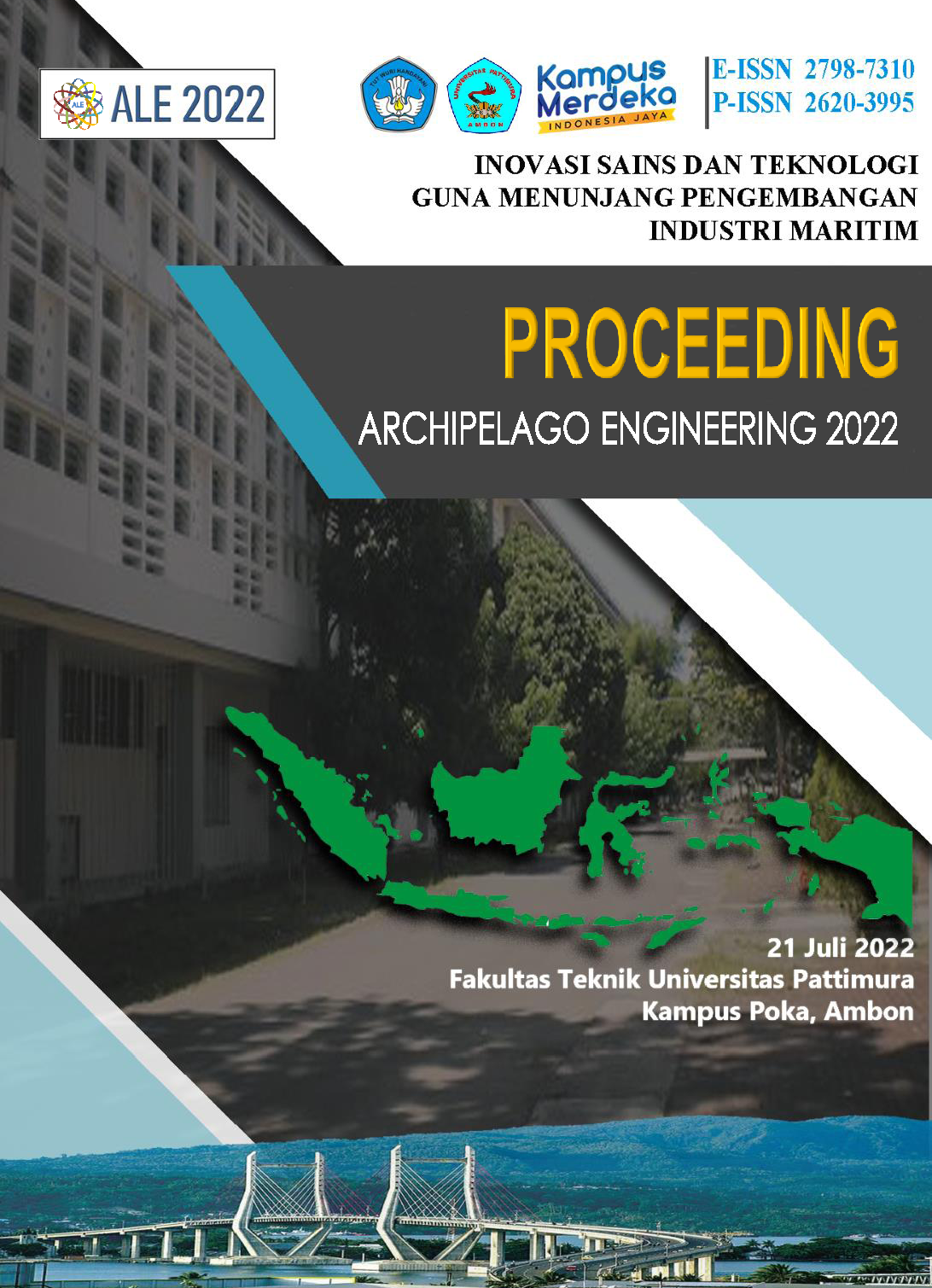PENGUKURAN KINERJA MENGGUNAKAN BALANCED SCORECARD DI GRAMEDIA AMBON
Abstract
Gramedia Asri Media merupakan salah satu anak perusahaan dari Kompas Gramedia yang menyediakan berbagai macam jaringan toko buku dengan nama Toko Buku Gramedia di berbagai wilayah yang ada di Indonesia dan Malaysia. Salah satu toko Gramedia juga terdapat di kota Ambon. Penelitian ini bertujuan untuk mengukur kinerja dari Toko Buku Gramedia Ambon berdasarkan metode pengukuran kinerja Balanced Scorecard. Ada empat perspektif yang menjadi tolak ukur dari Balanced Scorecard, yaitu perspektif keuangan, perspektif pelanggan, perspektif internal bisnis, serta perspektif pembelajaran dan pertumbuhan. Tingkat kinerja dihitung pada masing-masing indikator disetiap perspektif pengukuran. Hasil pengukuran menunjukkan bahwa kinerja toko buku Gramedia dari perspektif pembelajaran dan pertumbuhan sudah baik, dari perspektif internal bisnis sudah cukup baik, dari perspektif pelanggan cukup baik, dan lemah pada perspektif keuangan.
Downloads
References
R. S. Kaplan and D. P. Norton, The Balanced Scorecard: Translating Strategy into Action, 1st edition. Boston, Mass: Harvard Business Review Press, 1996.
R. S. Kaplan and D. P. Norton, “The Balanced Scorecard—Measures that Drive Performance,” Harvard Business Review, Jan. 01, 1992. Accessed: Oct. 18, 2022. [Online]. Available: https://hbr.org/1992/01/the-balanced-scorecard-measures-that-drive-performance-2
Bernadin and Russel, “John & Russel, Joyce EA 2003,” Human Resource Management (An Experimental Edition). Mc Grawhill Inc: Singapore, 2003.
D. R. Hansen and M. M. Mowen, Akuntansi Manajerial, 8th ed. Salemba Empat, 2011.
D. Ø. Madsen and T. Stenheim, “The Balanced Scorecard: A Review of Five Research Areas.” Rochester, NY, May 24, 2015. Accessed: Oct. 18, 2022. [Online]. Available: https://papers.ssrn.com/abstract=2612643
A. R. Ahmad and N. Kim Soon, “Balanced scorecard in higher education institutions: What should be consider?,” in 2015 International Symposium on Technology Management and Emerging Technologies (ISTMET), Aug. 2015, pp. 64–68. doi: 10.1109/ISTMET.2015.7359002.
E. G. Hansen and S. Schaltegger, “The Sustainability Balanced Scorecard: A Systematic Review of Architectures,” Journal of Business Ethics, vol. 133, no. 2, pp. 193–221, Jan. 2016, doi: 10.1007/s10551-014-2340-3.
G. H. Pink, I. McKillop, E. G. Schraa, C. Preyra, C. Montgomery, and G. R. Baker, “Creating a balanced scorecard for a hospital system,” J Health Care Finance, vol. 27, no. 3, pp. 1–20, Jan. 2001.
W. N. Zelman, G. H. Pink, and C. B. Matthias, “Use of the balanced scorecard in health care,” J Health Care Finance, vol. 29, no. 4, pp. 1–16, Jan. 2003.
C. Papenhausen and W. Einstein, “Implementing the Balanced Scorecard at a college of business,” Measuring Business Excellence, vol. 10, no. 3, pp. 15–22, Jan. 2006, doi: 10.1108/13683040610685757.
S. P. Philbin, “Design and implementation of the Balanced Scorecard at a university institute,” Measuring Business Excellence, vol. 15, no. 3, pp. 34–45, Jan. 2011, doi: 10.1108/13683041111161148.
S. Chen, C. Yang, and J. Shiau, “The application of balanced scorecard in the performance evaluation of higher education,” The TQM Magazine, vol. 18, no. 2, pp. 190–205, Jan. 2006, doi: 10.1108/09544780610647892.
G. Giannopoulos, A. Holt, E. Khansalar, and S. Cleanthous, “The Use of the Balanced Scorecard in Small Companies,” IJBM, vol. 8, no. 14, p. p1, Jun. 2013, doi: 10.5539/ijbm.v8n14p1.
K. J. Fernandes, V. Raja, and A. Whalley, “Lessons from implementing the balanced scorecard in a small and medium size manufacturing organization,” Technovation, vol. 26, no. 5, pp. 623–634, May 2006, doi: 10.1016/j.technovation.2005.03.006.
R. Sainaghi, P. Phillips, and V. Corti, “Measuring hotel performance: Using a balanced scorecard perspectives’ approach,” International Journal of Hospitality Management, vol. 34, pp. 150–159, Sep. 2013, doi: 10.1016/j.ijhm.2013.02.008.
Y. H. Kim, N. Barber, and D.-K. Kim, “Sustainability research in the hotel industry: Past, present, and future,” Journal of Hospitality Marketing & Management, vol. 28, no. 5, pp. 576–620, Jul. 2019, doi: 10.1080/19368623.2019.1533907.
B. Oyewo, O. Moses, and O. Erin, “Balanced scorecard usage and organizational effectiveness: evidence from manufacturing sector,” Measuring Business Excellence, vol. ahead-of-print, no. ahead-of-print, Jan. 2021, doi: 10.1108/MBE-01-2021-0005.
L. E. Quezada, D. E. Aguilera, P. I. Palominos, and A. M. Oddershede, “An ANP Model to Generate Performance Indicators for Manufacturing Firms Under a Balanced Scorecard Approach,” Engineering Management Journal, vol. 34, no. 1, pp. 70–84, Jan. 2022, doi: 10.1080/10429247.2020.1840877.
A. Y. Effendi, T. Soebijono, and E. Rahmawati, “Performance Assessment System Architecture of Retail Shops in PT. Surabaya International Stars with the Balanced Scorecard Method,” Journal:eArticle, Universitas Dinamika, 2018. Accessed: Oct. 22, 2022. [Online]. Available: https://www.neliti.com/publications/245867/
C. da C. Webber, J. O. Sausen, K. Basso, and C. G. Laimer, “Remodelling the retail store for better sales performance,” International Journal of Retail & Distribution Management, vol. 46, no. 11/12, pp. 1041–1055, Jan. 2018, doi: 10.1108/IJRDM-08-2017-0162.
N. Nuraeni, M. Sidik, R. Nasri, and M. Yusuf, “MEASURING EMPLOYEE PERFORMANCE WITH THE HUMAN RESOURCE SCORECARD APPROACH PT MATAHARI DEPARTMENT STORE CIPUTRA CIBUBUR,” Journal of Economics, Management, Entrepreneurship, and Business (JEMEB), vol. 1, no. 2, pp. 179–186, Nov. 2021, doi: 10.52909/jemeb.v1i2.50.
S. Elbanna, R. Eid, and H. Kamel, “Measuring hotel performance using the balanced scorecard: A theoretical construct development and its empirical validation,” International Journal of Hospitality Management, vol. 51, pp. 105–114, Oct. 2015, doi: 10.1016/j.ijhm.2015.09.004.
S. Elbanna, H. Kamel, T. Fatima, and R. Eid, “An investigation of the causality links in the balanced scorecard: The case of the Gulf Cooperation Council hospitality industry,” Tourism Management Perspectives, vol. 41, p. 100934, Jan. 2022, doi: 10.1016/j.tmp.2021.100934.
Copyright (c) 2022 Christian Alessandro, Alfredo Tutuhatunewa, Daniel B. Paillin

This work is licensed under a Creative Commons Attribution-ShareAlike 4.0 International License.
An author who publishes in the ALE Proceeding agrees to the following terms:
- Author retains the copyright and grants ALE Proceeding the right of first publication of the work simultaneously licensed under the Creative Commons Attribution-ShareAlike 4.0 License that allows others to share the work with an acknowledgment of the work's authorship and initial publication in this journal.
- Author is able to enter into separate, additional contractual arrangements for the non-exclusive distribution of the journal's published version of the work (e.g., post it to an institutional repository or publish it in a book) with the acknowledgment of its initial publication in this journal.
- Author is permitted and encouraged to post his/her work online (e.g., in institutional repositories or on their website) prior to and during the submission process, as it can lead to productive exchanges, as well as earlier and greater citation of the published work (See The Effect of Open Access).
Read more about the Creative Commons Attribution-ShareAlike 4.0 Licence here: https://creativecommons.org/licenses/by-sa/4.0/.






